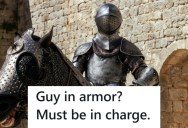This Day In History – June 15th

WASHINGTON APPOINTED COMMANDER IN CHIEF – JUNE 15, 1775

George Washington (February 22, 1732 – December 14, 1799) commanded the Continental Army in American Revolutionary War (1775–1783), and was the first President of the United States, serving from 1789 to 1797. Because of his central role in the founding of the United States, Washington is often called the “Father of his Country”.
Washington played a leading military and political role in the American Revolution. His involvement began as early as 1767, when he first took overt political stands against the acts of the British Parliament. After the war broke out with the Battles of Lexington and Concord in April 1775, his role became military with his appointment as commander-in-chief of the Continental Army on June 15, 1775.
In the early years of the war Washington was often in the middle of the action, first directing the Siege of Boston to its successful conclusion, but then losing New York City and almost losing New Jersey before winning surprising and decisive victories at Trenton and Princeton at the end of the 1776 campaign season.
One of Washington’s most important contributions as commander-in-chief was to establish the precedent that civilian-elected officials, rather than military officers, possessed ultimate authority over the military. Throughout the war, he deferred to the authority of Congress and state officials, and he relinquished his considerable military power once the fighting was over. [Source: Wikipedia]

Artwork by EMANUEL LEUTZE
Leutze’s depiction of Washington’s attack on the Hessians at Trenton on December 25, 1776, was a great success in America and in Germany. Leutze began his first version of this subject in 1849. It was damaged in his studio by fire in 1850 and, although restored and acquired by the Bremen Kunsthalle, was again destroyed in a bombing raid in 1942. In 1850, Leutze began this version of the subject, which was placed on exhibition in New York during October of 1851. At this showing Marshall O. Roberts bought the canvas for the then-enormous sum of $10,000.

Artwork by JOHN TRUNBULL
This painting depicts the forces of British Major General Charles Cornwallis, 1st Marquess Cornwallis (1738-1805) (who was not himself present at the surrender), surrendering to French and American forces after the Siege of Yorktown (September 28 – October 19, 1781) during the American Revolutionary War.
ARLINGTON ESTABLISHED AS MILITARY CEMETERY – JUNE 15, 1864

Photograph by U.S. Army
Arlington National Cemetery in Arlington County, Virginia, is a military cemetery in the United States of America, established during the American Civil War on the grounds of Arlington House, formerly the estate of the family of Confederate general Robert E. Lee’s wife Mary Anna (Custis) Lee, a great grand-daughter of Martha Washington. The cemetery is situated directly across the Potomac River from the Lincoln Memorial in Washington, D.C.
In an area of 624 acres (2.53 km2), veterans and military casualties from each of the nation’s wars are interred in the cemetery, ranging from the American Civil War through to the military actions in Afghanistan and Iraq. Pre-Civil War dead were reinterred after 1900.
Arlington National Cemetery was established by Brigadier General Montgomery C. Meigs, who commanded the garrison at Arlington House and appropriated the grounds on June 15, 1864, for use as a military cemetery. His intention was to render the house uninhabitable should the Lee family ever attempt to return. A stone and masonry burial vault in the rose garden, 20 feet (6.1 m) wide and 10 feet (3.0 m) deep, and containing the remains of 2,111 Civil War dead, was among the first monuments to Union dead erected under Meigs’ orders. Meigs himself was later buried within 100 yards (91 m) of Arlington House with his wife, father and son. [Source: Wikipedia]

Photograph by Sgt. Jim Varhegyi, U.S. Air Force
Thousands of Christmas wreaths are nestled against headstones in Section 27 at Arlington National Cemetery in Arlington, Va., on Dec. 15, 2005. Hundreds of volunteers gathered at Arlington to place more than five thousand donated Christmas wreaths on head stones in the cemetery. The 14th annual wreath laying event is a result of Worcester Wreath Company owner Morrill Worcester’s boyhood dream of doing something to honor those laid to rest in the National Cemetery.
JAPAN’S DEADLIEST TSUNAMI KILLS 22,000 – JUNE 15, 1896

The 1896 Meiji-Sanriku earthquake was highly destructive, generating one of the most devastating tsunamis in Japanese history, destroying about 9,000 homes and causing at least 22,000 deaths. This magnitude 7.2 event occurred at 19:32 (local time) on June 15, 1896. The magnitude of the tsunami was much greater than expected for the estimated seismic magnitude and this earthquake has been regarded as being part of a distinct class of events, a tsunami earthquake.
The epicenter of this earthquake lies just to the west of the Japan Trench, the surface expression of the west-dipping subduction zone that forms part of the convergent boundary between the Pacific and Eurasian plates. [Source: Wikipedia]
ALCOCK & BROWN: FIRST NONSTOP TRANSATLANTIC FLIGHT – JUNE 15, 1919

British aviators Alcock and Brown made the first non-stop transatlantic flight in June 1919. They flew a modified World War I Vickers Vimy bomber from St. John’s, Newfoundland, to Clifden, Connemara, County Galway, Ireland. Winston Churchill presented them with the Daily Mail prize for the first crossing of the Atlantic Ocean in ‘less than 72 consecutive hours’ and they were knighted at Windsor Castle by King George V.
Alcock and Brown flew a modified Vickers Vimy IV twin-engined bomber powered by two Rolls-Royce Eagle engines, each of 360 hp, taking off from Lester’s Field in St. John’s, Newfoundland at around 1:45pm, June 14, 1919. When in poor visibility they misidentified a bog as a suitable grass field to land, their aircraft technically crashed on landing (53°26?N 10°01?W) near Clifden in Connemara in County Galway, Ireland, at 8:40am on June 15, 1919. They had spent around fourteen-and-a-half hours over the North Atlantic crossing the coast at 4.28pm, having flown 1890 miles (3040 km) in 15 hours 57 minutes at an average speed of 115 mph (185 km/h). Their altitude varied between sea level and 12,000 ft (3,700 m) and upon take-off they carried 865 imperial gallons (3,900 L) of fuel on board.
The flight nearly ended in disaster several times owing to engine trouble, fog, snow and ice. It was only saved by Brown’s continual climbing out on the wings to remove ice from the engine air intakes and by Alcock’s excellent piloting despite extremely poor visibility at times and even snow filling the open cockpit. The aircraft was badly damaged upon arrival due to the attempt to land in what appeared from the air to be a suitable green field but which turned out to be the bog on Derrygimlagh Moor, but neither of the airmen was hurt. Their first interview was given to Tom ‘Cork’ Kenny of The Connacht Tribune. [Source: Wikipedia]

Alcock and Brown and spectators in St. John’s, Newfoundland, 1919 Provincial Archives of Newfoundland and Labrador

WWII BATTLE OF SAIPAN BEGINS – JUNE 15, 1944

The Battle of Saipan was a battle of the Pacific campaign of World War II, fought on the island of Saipan in the Mariana Islands from 15 June-9 July 1944. The Allied invasion fleet embarking the expeditionary forces left Pearl Harbor on 5 June 1944, the day before Operation Overlord in Europe was launched. The U.S. 2nd Marine Division, 4th Marine Division, and 27th Infantry Division, commanded by Lieutenant General Holland Smith, defeated the 43rd Division of the Imperial Japanese Army, commanded by Lieutenant General Yoshitsugu Saito.
Bombardment of Saipan began on 13 June 1944. Fifteen battleships were involved, and 165,000 shells were fired. Seven modern fast battleships delivered twenty-four hundred 16 in (410 mm) shells, but to avoid potential minefields, fire was from a distance of 10,000 yd (9,100 m) or more, and crews were inexperienced in shore bombardment. The following day the eight pre-Pearl Harbor battleships and eleven cruisers under Admiral Jesse B. Oldendorf replaced the fast battleships but were lacking in time and ammunition.

The landings began at 07:00 on 15 June 1944. More than 300 LVTs landed 8,000 Marines on the west coast of Saipan by about 09:00. Eleven fire support ships covered the Marine landings. The naval force consisted of the battleships USS Tennessee and California. The cruisers were USS Birmingham and Indianapolis. The destroyers were USS Norman Scott, Monssen, Colahan, Halsey Powell, Bailey, Robinson and Albert W. Grant.
Careful Japanese artillery preparation—placing flags in the bay to indicate the range—allowed them to destroy about 20 amphibious tanks, and the Japanese strategically placed barbed wire, artillery, machine gun emplacements, and trenches to maximize the American casualties. However, by nightfall the 2nd and 4th Marine Divisions had a beachhead about 6 mi (9.7 km) wide and .5 mi (0.8 km) deep.
The Japanese counter-attacked at night but were repulsed with heavy losses. On 16 June, units of the U.S. Army’s 27th Infantry Division landed and advanced on the Aslito airfield. Again the Japanese counter-attacked at night. On 18 June, Saito abandoned the airfield.

Saipan, one of the 15 chain islands of the Mariana, was only approximately 1,300 mi (1,100 nmi; 2,100 km) away from home islands of Japan. It was a very important strategic point for the U.S. during the second world war in the pacific theater. It was the key position for the Americans to bring the war to Japanese home land.
After the battle, Saipan became an important base for further operations in the Marianas, and then for the invasion of the Philippines in October 1944. Bombers based at Saipan attacked the Philippines, the Ryukyu Islands and Japan. In response, Japanese aircraft attacked Saipan and Tinian on several occasions between November 1944 and January 1945. With the position secured, American army could also make advancement in the Philippines and also make direct contact with its Chinese ally. [Source: Wikipedia]


THE 1996 MANCHESTER BOMBING – JUNE 15, 1996
The 1996 Manchester bombing was an attack carried out by the Provisional Irish Republican Army (IRA) on 15 June 1996 in Manchester, England. The bomb, placed in a van on Corporation Street in the city centre, targeted the city’s infrastructure and economy and caused widespread damage, estimated by insurers at £700 million (£1 billion as of 2011). Two hundred and twelve people were injured, but there were no fatalities.
Formed in 1969, the Provisional IRA adopted a strategy of violence to achieve its aim of a united Ireland. Although Manchester had been the target of IRA bombs before 1996, it had not been subjected to an attack on this scale, the largest device detonated in Great Britain during peacetime. The bombing was condemned by the British and Irish governments, along with US President Bill Clinton. Five days after the blast the IRA issued a statement in which it claimed responsibility, but regretted causing injury to civilians.
Several buildings close to the centre of the explosion had to be demolished, while many more were closed for months for structural repairs. Most of the rebuilding work was completed by the end of 1999, at a cost of £1.2 billion, although redevelopment continued until 2005. At the time of the explosion Manchester was playing host to the Euro ’96 football championships; a match between Russia and Germany was scheduled for the following day at Old Trafford, and the city had the year before won its bid to host the 2002 Commonwealth Games. The perpetrators of the attack have not been caught, and Greater Manchester Police have conceded it is unlikely that anyone will be charged in connection with the bombing. [Source: Wikipedia]


Photograph by Parrot of Doom
The epicenter of the 1996 Manchester Bomb in 2009
CLICK HERE TO SEE ALL PREVIOUS ‘THIS DAY IN HISTORY’ POSTS

Sign up to get our BEST stories of the week straight to your inbox.




